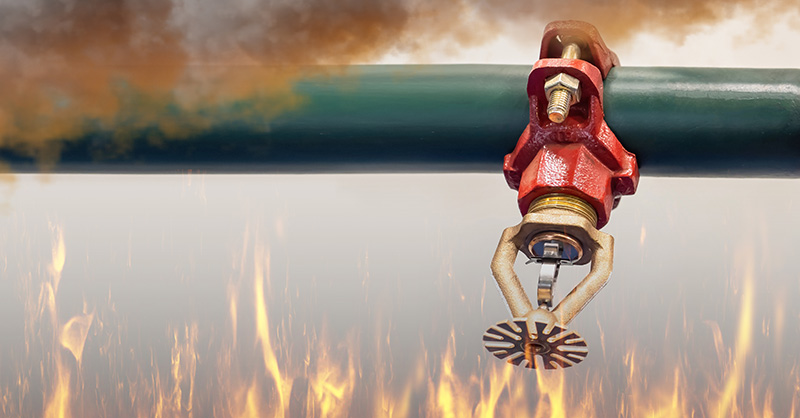Fire Protection System Impairment Programs

A fire protection system impairment refers to when a building’s fire suppression system becomes unable to operate as intended. Impaired fire sprinkler systems are a common cause of total building loss in fire scenarios.
A typical reason for sprinkler system impairment is a control valve that is closed for maintenance activities but never reopened after the maintenance is complete. This is especially true in emergency situations, such as pipe bursts, earthquakes and electrical issues.
A fire protection system impairment program is a step-by-step process that ensures:
- Ongoing monitoring and supervision of the building is in place while the system is impaired.
- The fire protection system is fully restored to service after the impairment scenario has concluded.
What Should Your Impairment Program Include?
The NFPA 25 Standard for the Inspection, Testing and Maintenance of Water-Based Fire Protection Systems establishes requirements for fire protection system impairment programs. The National Fire Protection Association (NFPA) also provides an example of an Impairment Program that can be used as a guide.
According to the NFPA 25 standard, fire protection system impairment programs should include the following:
- An appointed Impairment Coordinator for the building’s fire protection system(s). If no person has been appointed, the fire department or other regulatory officials will anticipate that the building owner or head of the company is the Impairment Coordinator.
- A tag system that indicates a water control valve is closed. The tag should identify that the affected system is not functioning and be placed on the valve and the fire department connection outside of the building.
System impairments should be designated as “non-emergency” (routine maintenance for the systems) or “emergency” (a forklift hits a sprinkler branch line, a line freezes, etc.).
Non-Emergency Impairments
Any pre-planned system impairments must be pre-approved by the Impairment Coordinator. The Impairment Coordinator shall be responsible for verifying that:
- The extent and duration of the impairment is clear and defined.
- Areas usually protected by a fire protection system have been inspected, and any increased risk has been determined.
- Recommendations to reduce risk have been submitted to building management.
- If the system is impaired for 10 hours or more in a 24-hour period, the Impairment Coordinator shall arrange for one or more of the following strategies to be followed:
- Evacuation of all personnel from the affected areas of the building (as necessary).
- A continual fire watch in the affected area.
- A temporary water supply is provided for the affected systems, including additional extinguishers.
- Eliminate all ignition and fuel sources for a fire in the area (i.e., deactivate electricity, remove flammable liquids, eliminate combustible items, etc.).
- Notify the fire department using a non-emergency method that the fire protection systems will be temporarily deactivated.
- Notify the alarm company and other authorities of the planned impairment.
- Notify supervisors in affected areas.
- Implement the tag impairment system discussed above.
- Ensure all needed tools and equipment have been assembled on the site.
Emergency Impairments
- Emergency impairments are handled in the same way as non-emergency procedures, except that the Impairment Coordinator will need to work within their own Emergency Action Plan and communicate with those responsible for filing an insurance claim.
- Once the protection system is ready to be brought back into service, the Impairment Coordinator:
- Verifies that all necessary inspections and tests have been completed to recertify the system.
- Alerts supervisors that the fire protection system will/has been returned to service. The estimated date of repair and operational updates should be provided when the system is restored.
- Notifies the alarm company and applicable organizations when the system is restored.
- Remove the impairment tag from the valves and fire department connection.









